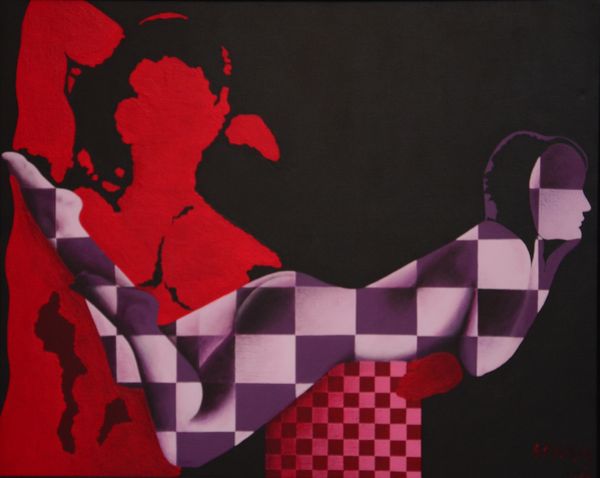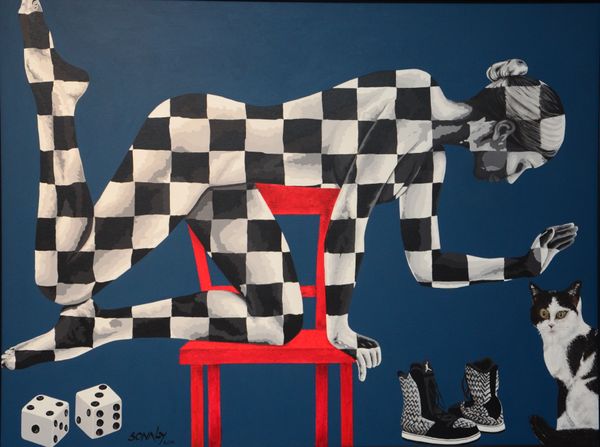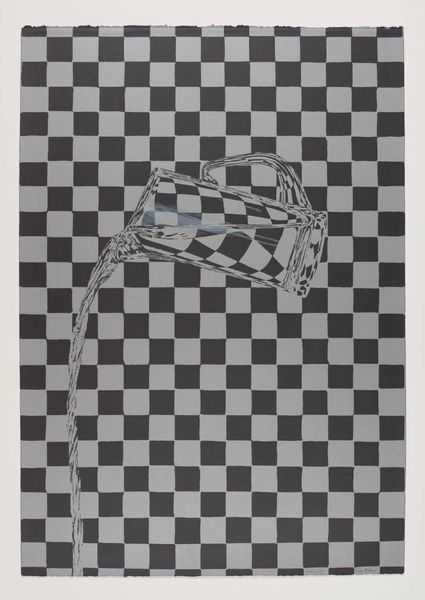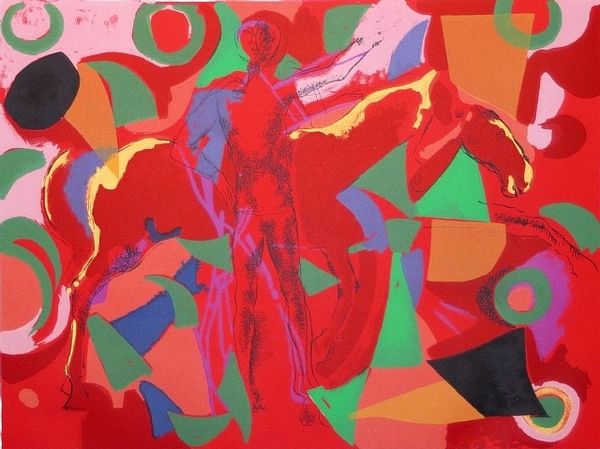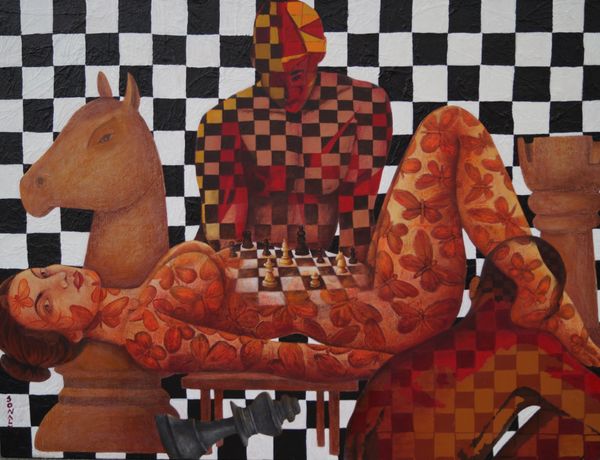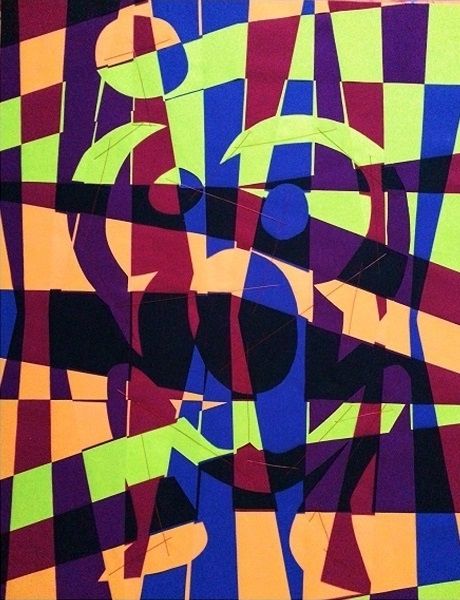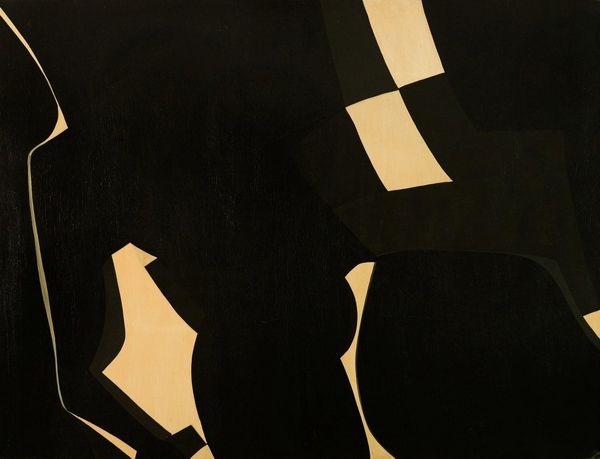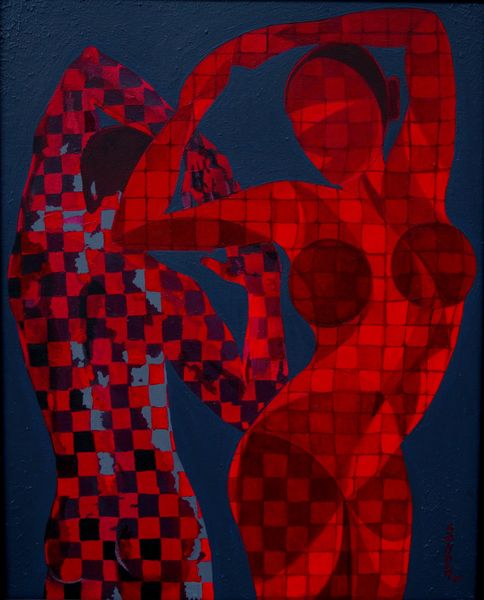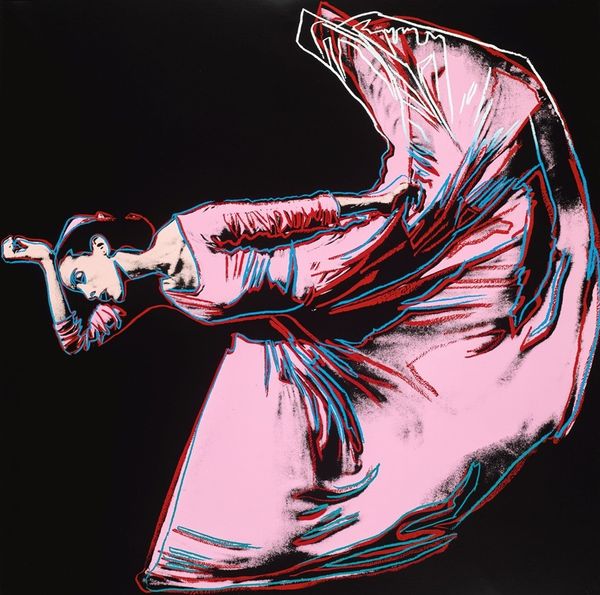
painting, acrylic-paint
#
contemporary
#
painting
#
physical art
#
pop art
#
acrylic-paint
#
figuration
#
neo expressionist
#
geometric
#
nude
Copyright: © All content copyright Sonaly Gandhi
Curator: Here we have an untitled painting by Sonaly Gandhi. What are your initial thoughts? Editor: It's…disorienting. The checkered pattern makes the figure almost dissolve into the dark background, a startling tension between visibility and invisibility. It immediately makes me think of how the industrial weaving or patterning could relate to body politics or representations of women in advertising or mass media. Curator: The checkerboard certainly is striking. Visually, the pattern alludes to Harlequin figures or the idea of disguise. There’s also something very mathematical and precise about it contrasting the organic, flowing lines of the body. It prompts thoughts about the interplay of control and freedom, both imposed upon and self-generated by the body. The color also signals eroticism; it suggests ideas and fantasies associated with intimacy and interiority. Editor: Yes, the materials contribute significantly. Gandhi employed acrylic paints, a product of industrial chemistry. Acrylic dries quickly, layering color efficiently and contributing to this clean division between shades of white and the crimson-maroon tones that constitute the checkered squares. And the canvas itself…that’s industry at work too, producing these surfaces on which to project. It's really fascinating to think about what materials that come from outside contribute to the art-making process. Curator: Absolutely. The choice of subject, a nude figure, also carries a strong historical weight, reflecting both the male gaze and a female-centric point of view that is sensuous, even defiant. The checkerboard can represent both restriction and ornamentation—wrapping the form, paradoxically concealing while displaying. It triggers contemplation of societal perceptions around desire, ownership, and display of the body, or simply a psychological journey for the viewer and/or creator, expressed through such vibrant design and pattern work. Editor: Precisely, how our bodies become commodities and are ornamented. The geometric quality and medium point to an artist working and reckoning within the forces of modernization. Looking at it this way—the artwork challenges the distinction between decoration and art, drawing attention to production value. Curator: I agree; the piece encapsulates how art, labor, identity, and meaning interweave and shift and change over time. Editor: Indeed, it prompts reflection on how materiality can reshape even the oldest and most familiar of subjects: the human figure.
Comments
No comments
Be the first to comment and join the conversation on the ultimate creative platform.
